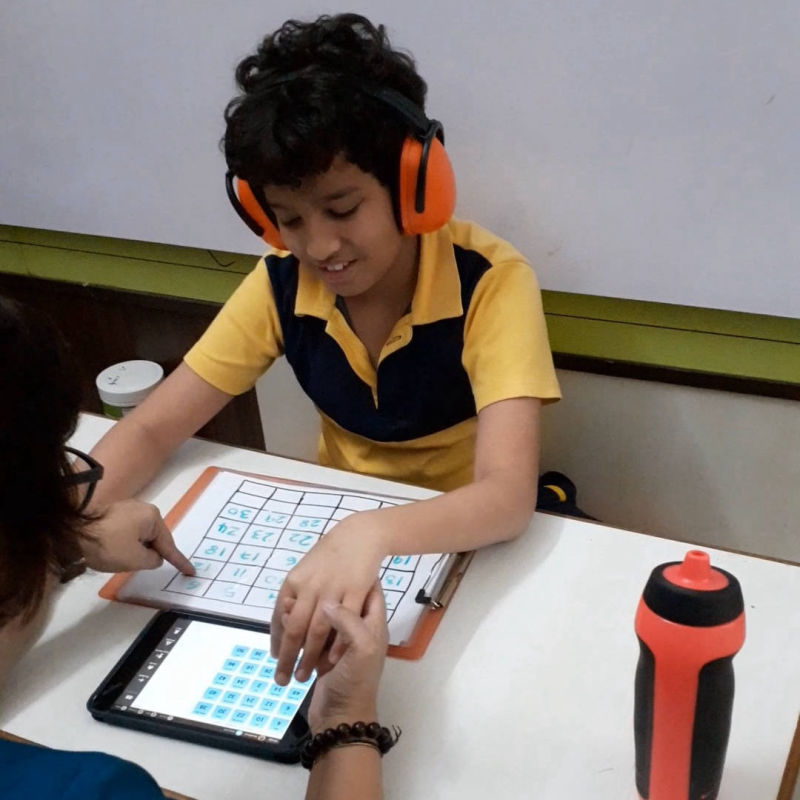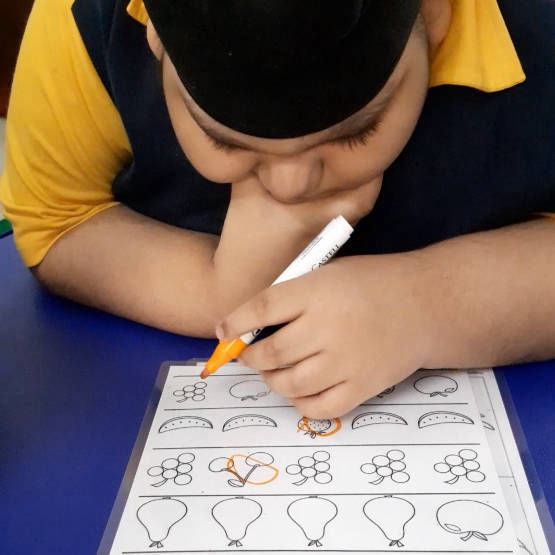



Cognitive skills include children’s ability to read and write, their numeracy capabilities and their understanding of logical problem-solving.
Cognitive outcomes are targeted with systematic and specialised education plans that are assessed and reviewed on a regular basis to optimise the teaching learning experience. In Cognitive Development we have:
Individualized Education Plan
An Individualized Education Plan, also called the IEP, is developed for each child in the school. It is created through team effort and reviewed periodically. It considers the needs of the child, his / her skill sets and areas of interest. The IEP is a combination of group and individual activities and all the therapies and programs available in the school.
Academics
Pratham
Pratham is an innovative learning organization created to improve the quality of education in India. As one of the largest non-governmental organizations in the country, Pratham focuses on high-quality, low-cost, and replicable interventions to address gaps in the education system.
The school follows the curriculum mentioned by Pratham. There are three levels:
The examinations will be held by Pratham & NIOS board which will analyse the basic knowledge of the concepts.
National Institute of Open Schooling
The National Institute of Open Schooling (NIOS) is a national board that follows an open school format to increase literacy and provide education for all. The curriculum is made to suit the children’s ability, skillset, and areas of interest. The NIOS board is government authorised and it is recognised by all universities and educational institutions across India. The school helps train students to appear for the NIOS examinations.
Reading Program
Students are taught reading with the help of flash cards. The reading program also helps develop the visual pathway. After a few months at the school, most children learn to read even though they may still be non-verbal.
Math Program
The Math program starts with quantity recognition. Basic concepts like addition and subtraction are also taught through quantities. The dot cards used for this program also help to develop the visual pathway.
Knowledge Development Program
Different concepts are introduced to the children throughout the year. Knowledge development is also done with the help of picture cards.
Functional Academics
Functional Academics is defined as academic areas that will be used by the student for the rest of their life, for e.g.
At the Academy we tailor the program, based on age, functional level, and areas of strength and need. Each skill is broken down into smaller tasks that make it easy to teach and adapt as the child learns. These skills are not taught in isolation but are a part of a systematic and multi sensorial approach.
Sight words and games like Scrabble to make reading and spelling fun.
Number recognition and counting is reiterated through board games like Snakes and Ladders, Ludo, UNO, and Monopoly.
Time concept is taught through the day as the child moves from one activity to another. Also discussing activities done during the day e.g., Waking up, brushing teeth, lunch time etc are very effective to teach the children about time and time management.
Money concept is taught through identification and sorting of coins and notes of different denominations.
Structured Program for children on the Autism Spectrum Disorder
Children on the autism spectrum rely on visual schedules and routines to keep their environment predictable. Application of rules and routines in school and home helps students with autism engage more successfully in activities and prevents problem behaviours. Routines help create an efficient environment – they save time. When students know routines, they can perform daily activities more quickly. We, at Academy of Learning and Development, understand the importance of routine and structure for our kids and apply them in various settings and situations.
Visual structure forms a very important part of schedules as they add a physical component to tasks to assist students in understanding HOW an activity should be completed. Students with ASD work very well with visual structures, these aid in increasing attention, engagement with materials and allows students to locate the most relevant information while completing his/her work. These can include drawing, photos, numbers, and words to help kids understand when and what activities should be taking place.
Benefits of using schedules in school:
Apart from Visual schedules, we also follow a whole structured programme for our kids on the spectrum, this includes:
Related Links:
Physical Skills | Communication Skills | Social and Emotional Skills | Self-help and Adaptive Skills